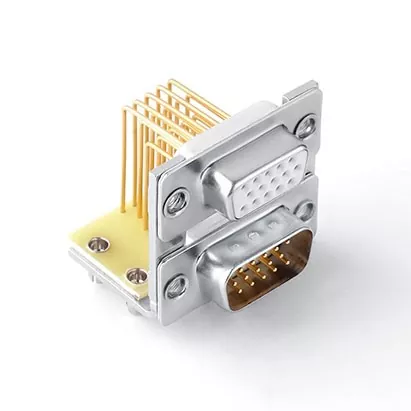Installation and Maintenance of D-Sub Connectors
2025-08-15
D-Sub connectors are essential components in various electronic and industrial applications, offering reliable connectivity for data and power transmission. Proper installation and maintenance ensure optimal performance and longevity. This guide covers everything you need to know about D-Sub connectors, including key specifications, installation steps, and maintenance tips.
Key Features of Our D-Sub Connectors
Our D-Sub connectors are designed for durability and high performance. Below are the key specifications:
Product Parameters
| Feature | Specification |
|---|---|
| Contact Material | Gold-plated or tin-plated copper alloy |
| Shell Material | Steel, nickel-plated or zinc alloy |
| Voltage Rating | Up to 250V AC/DC |
| Current Rating | 5A per contact |
| Operating Temperature | -55°C to +125°C |
| Contact Resistance | ≤20mΩ |
| Insulation Resistance | ≥1000MΩ |
| Mating Cycles | 500+ cycles |

Available Configurations
-
Standard D-Sub Connectors: 9-pin, 15-pin, 25-pin
-
High-Density D-Sub Connectors: 26-pin, 44-pin
-
Filtered D-Sub Connectors: EMI/RFI shielded variants
Installation Guide for D-Sub Connectors
Proper installation ensures secure connections and prevents signal loss. Follow these steps:
-
Prepare the Cable
-
Strip the insulation carefully to expose the conductors.
-
Tin the wires if necessary to prevent fraying.
-
-
Terminate the Contacts
-
Insert each wire into the appropriate pin or socket.
-
Crimp or solder the connection securely.
-
-
Assemble the Connector
-
Insert the contacts into the insulator in the correct order.
-
Secure the backshell to protect against strain and interference.
-
-
Test the Connection
-
Use a multimeter to verify continuity.
-
Check for short circuits before final assembly.
-
Maintenance Tips for D-Sub Connectors
To extend the lifespan of your D-Sub connectors, follow these best practices:
-
Regular Inspection: Check for corrosion, bent pins, or loose connections.
-
Cleaning: Use a contact cleaner to remove dust and oxidation.
-
Proper Storage: Keep unused D-Sub connectors in anti-static bags to prevent damage.
-
Avoid Over-Mating: Excessive plugging/unplugging can wear out contacts.
Why Choose Our D-Sub Connectors?
Our D-Sub connectors are built to meet industry standards, ensuring reliability in harsh environments. Whether for industrial automation, telecommunications, or military applications, our connectors provide secure, high-performance connectivity.
For more details on our D-Sub connectors, explore our product catalog or contact our technical support team. Investing in quality connectors today saves time and costs on future repairs.



























